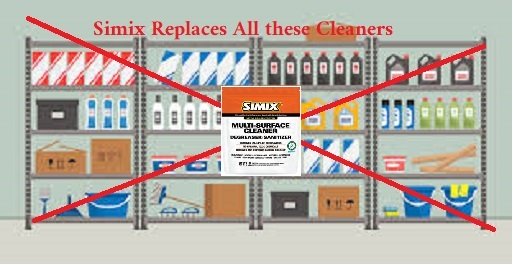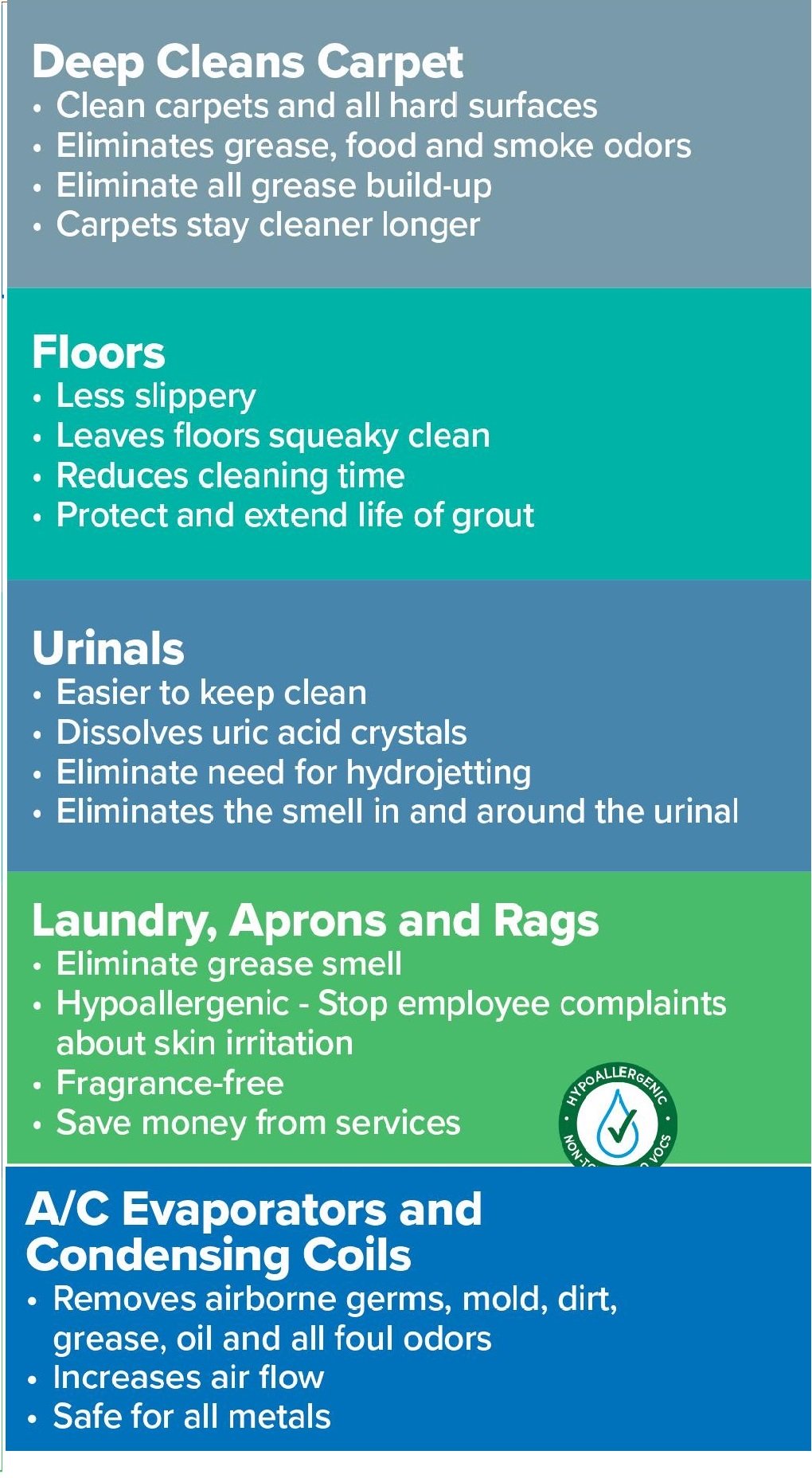How Facilities Use Simix for Viral Control
Although Simix has not yet moved into barns or equine facilities, it has already proven itself in other industries where sanitation, viral reduction, and constant cleaning demands intersect. These real-world use cases provide valuable insight into why Simix shows strong potential as a future tool for controlling Equine HPV on non-porous surfaces.
Below are examples from the types of environments where Simix is already used successfully—restaurants, commercial buildings, schools, and healthcare-support areas. These case-style explanations will help you visualize why the product’s performance translates well into settings where viral load management is critical.1. Restaurant Kitchens: High-Grease, High-Traffic, High-Contamination Zones

Commercial kitchens have sanitation challenges very similar to those in veterinary or equine-care buildings: constant organic buildup, heavy foot traffic, contamination risks, and frequent hand-to-surface contact.
Restaurants use Simix for:
- Food-prep surfaces
- Tile floors
- Stainless steel counters
- Restroom touchpoints
- Dishwasher areas
- Grease-heavy zones
These surfaces are almost identical to the non-porous ceramic tiles used in the ISO-17025 lab study where Simix achieved:
- 99.94% coronavirus reduction
- 99.74% calicivirus reduction
Restaurant staff appreciate Simix because it:
- Cuts through organic buildup
- Sanitizes without harsh chemicals
- Prevents biofilm formation
- Leaves surfaces easier to keep clean
- Is safe to use around people handling food
This performance directly aligns with challenges faced in areas where horses are treated or groomed: sweat, organic residues, high touchpoints, and dirt buildup.2. Commercial and Office Buildings: High-Touch Surfaces and Foot Traffic
Building maintenance teams use Simix to maintain:
- Restrooms
- Elevators
- Break rooms
- Kitchenettes
- Lobby floors
- Doorknobs and push plates
These locations face constant touchpoints from hundreds or thousands of people daily, creating a perfect storm for viral spread. Cleaning crews report that Simix:
- Reduces streaking
- Maintains shine on tile and metal
- Doesn’t damage finishes
- Fewer odors = safer in public spaces
- Allows long-lasting cleanliness
How Facilities Use Simix for Viral Control
Since papillomaviruses survive longest on hard, non-porous surfaces like door handles, elevator buttons, and tile,
Simix’s performance on these building surfaces reinforces its relevance for equine viral contamination control in the future. Schools and Childcare Facilities: Safe Daily Cleaning Required
Schools have stricter safety requirements than many other commercial environments because children have increased sensitivity to fumes, chemicals, and residue.
Simix is used in:
- Classrooms
- Cafeterias
- Gym floors
- Bathroom stalls
- Entryways
- Nurse offices
Workers appreciate that Simix:
- Has no chlorine fumes
- Is gentle enough for daily use
- Does not degrade surfaces
- Keeps floors less slippery
- Performs reliably without harsh chemicals
The ability to clean and sanitize without respiratory irritation is a major advantage, especially considering that horses—just like children—are sensitive to chemicals and inhale close to surfaces.4. Healthcare Support Areas (Non-Clinical): Cleanliness With Minimal Chemical Exposure
While Simix is not used inside clinical/sterile areas, it is used in supportive roles:
- Hallways
- Reception desks
- Visitor-access areas
- Waiting rooms
- Public restrooms
- Staff common areas
These spaces demand:
- Viral reduction
- Minimal chemical irritation
- Reliable cleaning across shift changes
Simix’s non-toxic formula and strong antiviral results make it ideal for these transitional medical environments.What These Environments Teach Us About Simix’s Future in Equine Facilities
Across all these use cases, several themes keep appearing:
✔ Simix works extremely well on non-porous surfaces—the same type most likely to harbor papillomavirus.
✔ It remains effective even with organic material present, unlike many disinfectants that fail unless surfaces are already spotless.
✔ It is safe for daily and long-term use—a must in environments where people (or animals) breathe closely to surfaces.
✔ It has documented antiviral reduction against a tough non-enveloped virus (calicivirus)—making it a strong research-backed candidate for Equine HPV environments.
✔ It leaves surfaces smoother and easier to clean next time, reducing viral hiding spots.
If these advantages translate into barns, equine veterinary clinics, and horse-handling areas, Simix could become one of the most promising modern cleaners for reducing Equine Papillomavirus contamination on non-porous surfaces.



